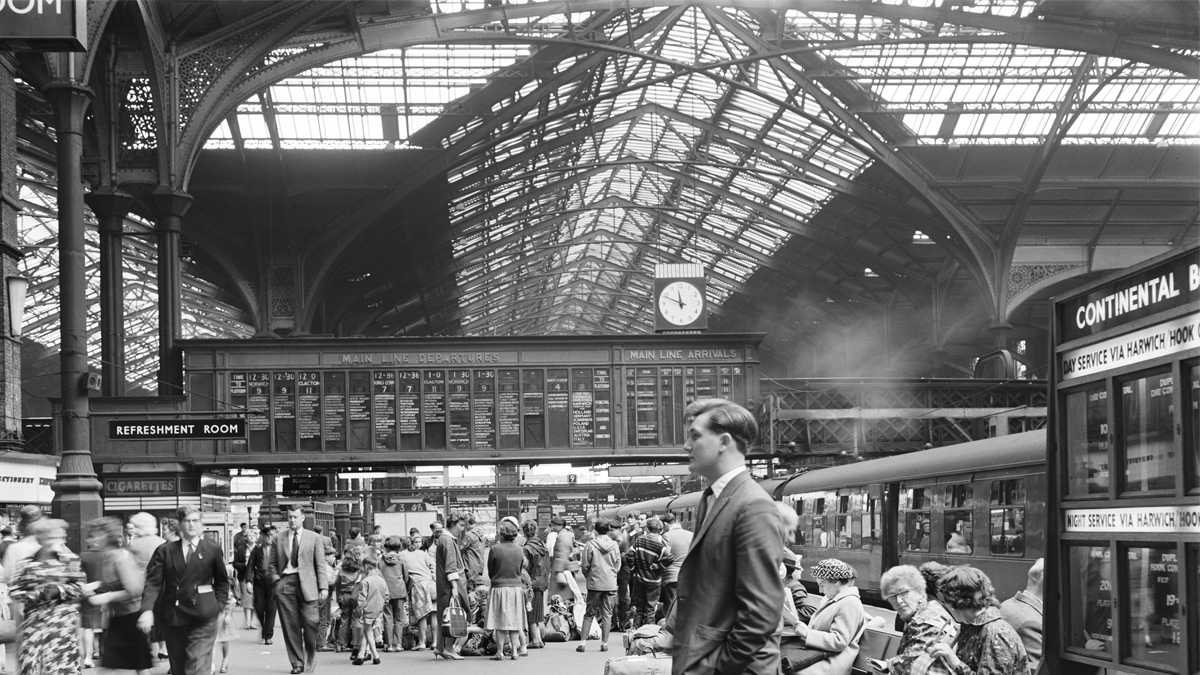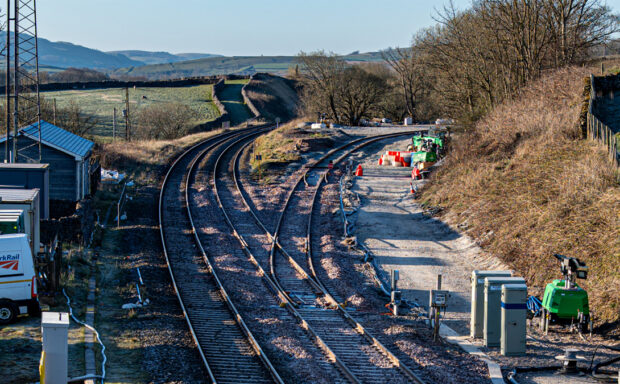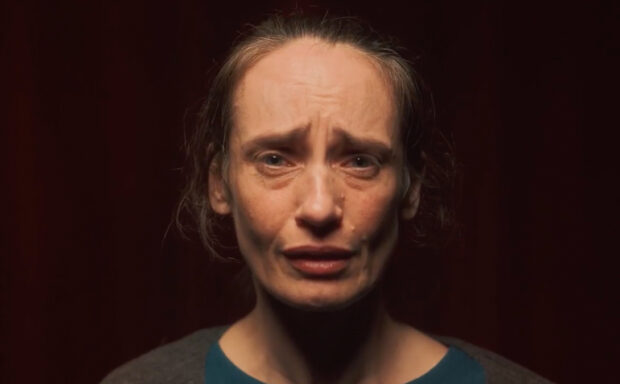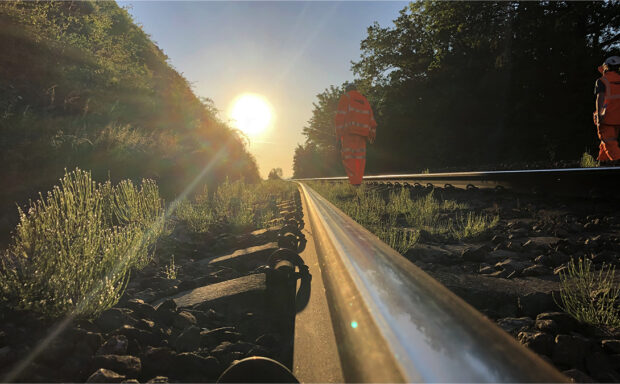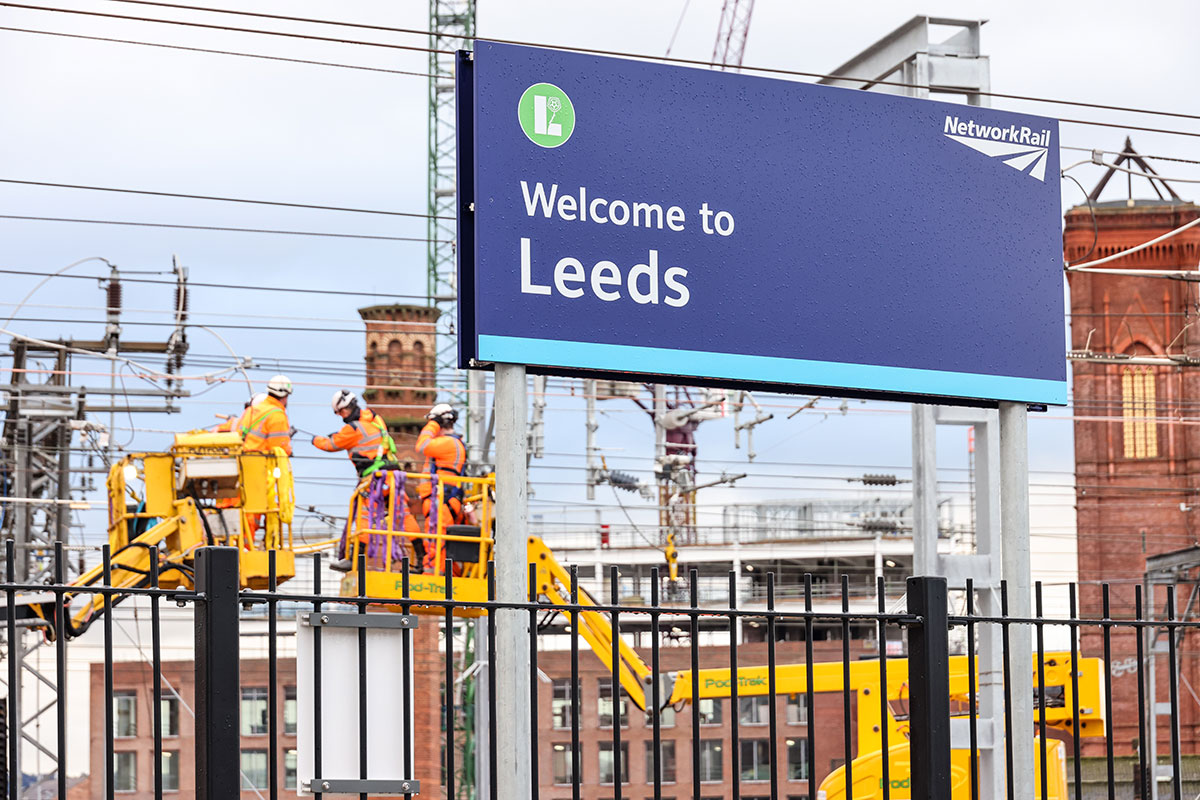London Liverpool Street station is turning 150 this year.
To celebrate, we’re sharing a series of photos that reveal some less well-known moments of its history. So, take a look below and travel back in time … to a very different London Liverpool Street.
Arrivals and departures
Liverpool Street has had iconic arrivals and departures boards over the years.
The photo above was taken in 1962 on platform nine and shows a traditional display.
The photo below, with white text laid against a blue background, shows a more recent system known as a flapper board. This Liverpool Street flapper board was the last of its kind in operation at a main line station in London, before it was replaced by today’s modern LED screen in 2007.
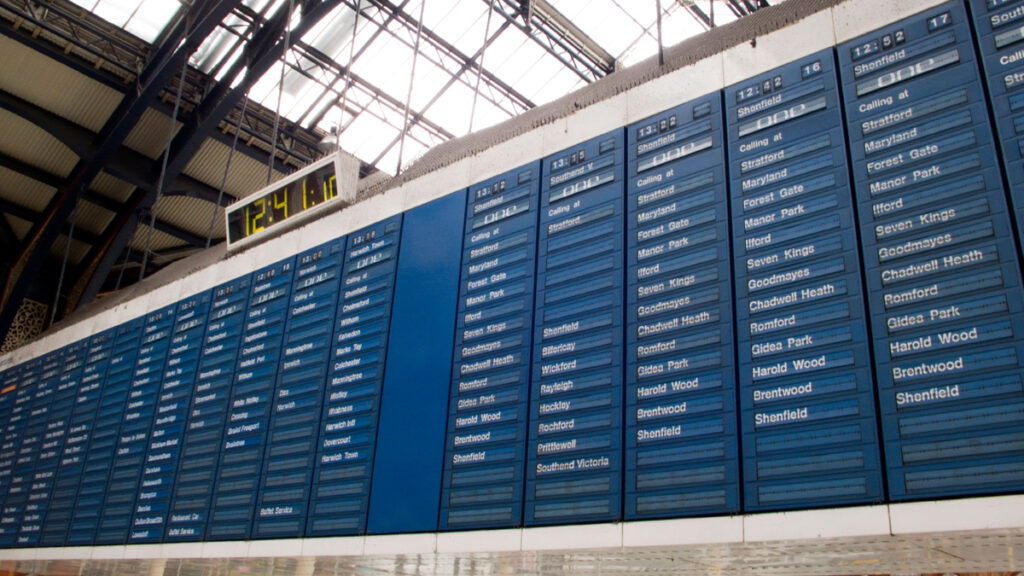
The Great Eastern Hotel
The Great Eastern Hotel was built next to Liverpool Street and welcomed its first guests in 1884, 10 years after the opening of the station. It was constructed and furnished to the highest standards. Although it was originally intended for passengers needing to stay overnight in London, the quality of its food and rooms quickly attracted large groups for dinners and City functions. Today the hotel is still here, now known as the Andaz London Liverpool Street.
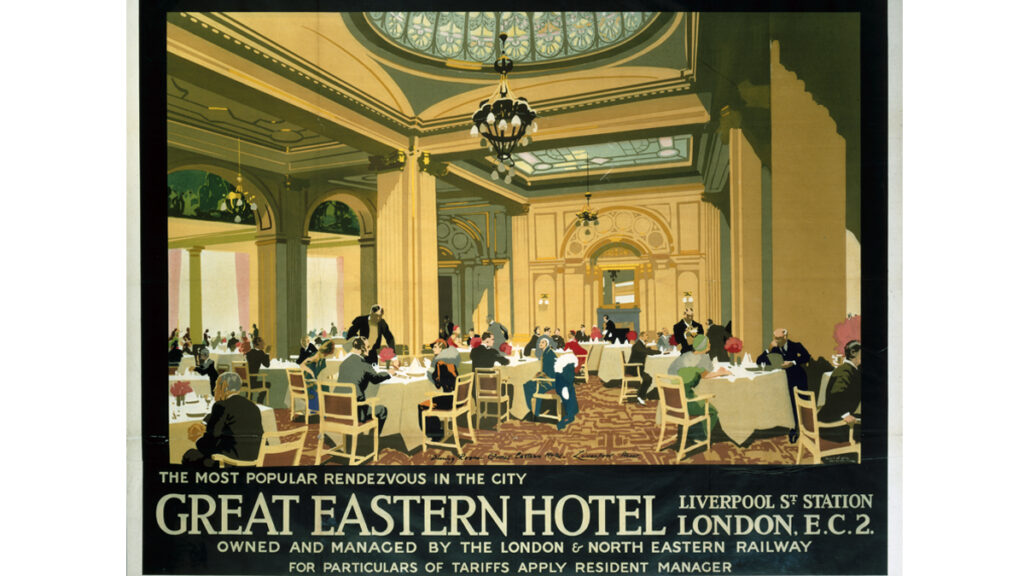
The poster shown above was used at some point between 1927 to 1943. The beautiful illustration depicts diners at the hotel eating in its lavish surroundings.
Foreign travel
Foreign travel has a long history at Liverpool Street.
The Great Eastern Railway took 96,000 passengers abroad in 1893 and it was 131,000 by 1900.
Passengers could get the train from Liverpool Street to Harwich Parkeston Quay and then take the ferry across the North Sea, putting the whole of the rest of Europe at their fingertips. The arrangement has continued in different forms to this day.
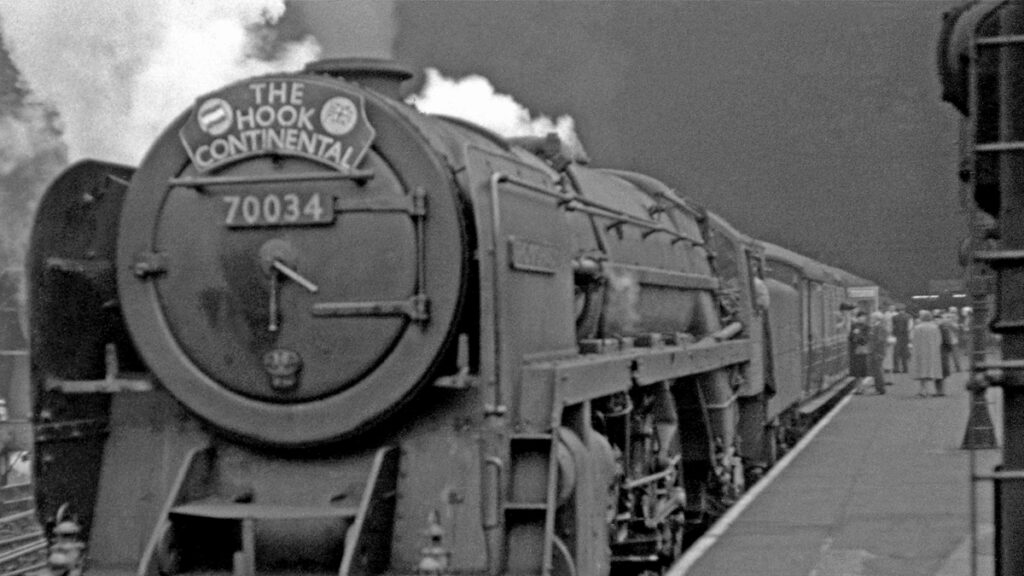
The image above shows the Hook Continental train waiting to leave Liverpool Street in 1955. It was launched as a named train in 1927 and connected with the Harwich – Hook of Holland ferry sailing.
The image below shows passengers boarding the Hook Continental train in 1971. The passengers are members of the Bach Choir and are travelling to Holland to perform.
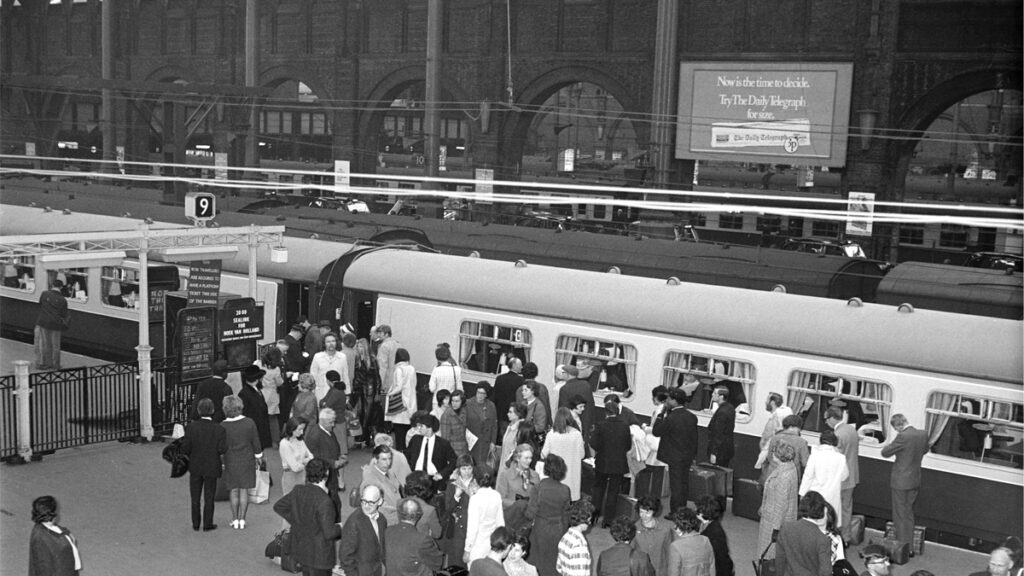
Food and drink on board
Food and drink has always been a big deal on trains travelling to and from Liverpool Street.
The kitchen of the restaurant car on the Norfolk Coast Express in 1910 is shown in the image below.
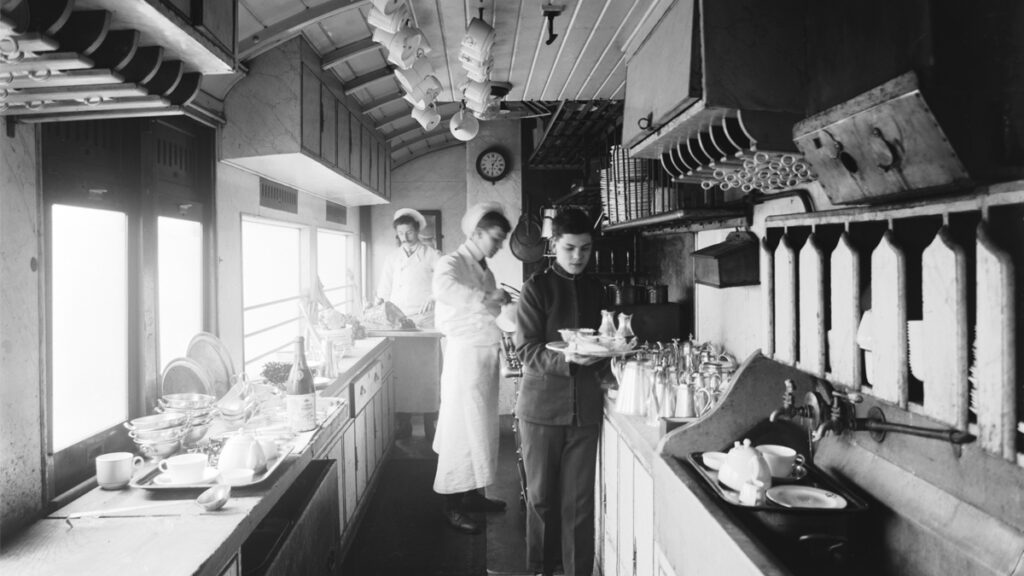
The cooks had to work in a limited space. There were sinks, draining boards, cupboards and a gas-fired stove. Plates were held in wooden racks, with cups hanging from the ceiling. In the photo, one of the cooks is preparing a joint of meat, while a waiter prepares a tray with silver pots for tea and coffee. Lunches cost two shillings and six pence – around £10 today. The Norfolk Coast Express ran between Liverpool Street and Cromer in Norfolk for seven years between 1907 and 1914.
The next image shows the menu for a journey between Liverpool Street and Harwich Parkeston Quay in May 1935.
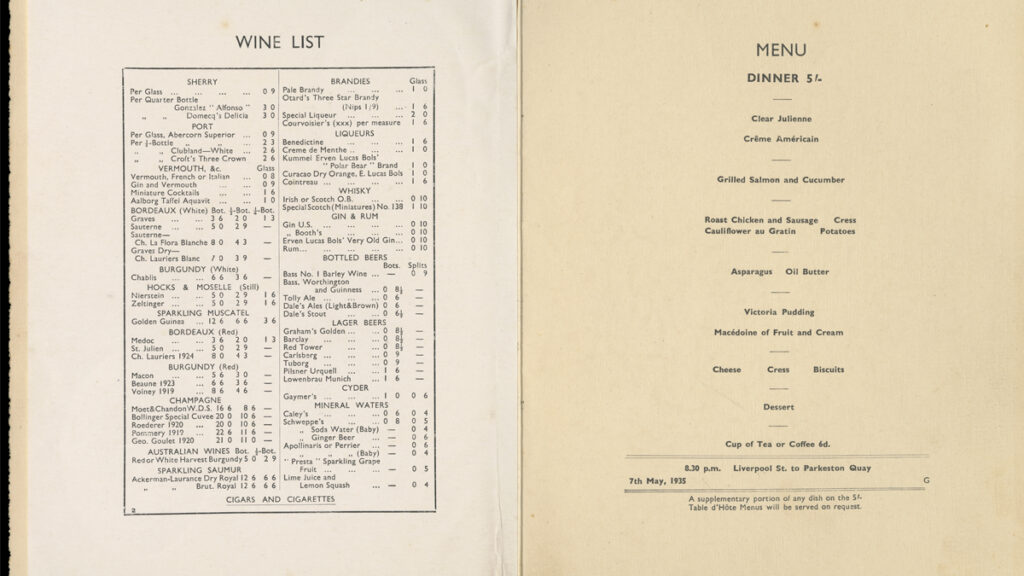
Freight
It hasn’t just been hundreds of millions of passengers who have started and ended their journeys at Liverpool Street over the years. All sorts of foods, parcels and packages have passed through the platforms.
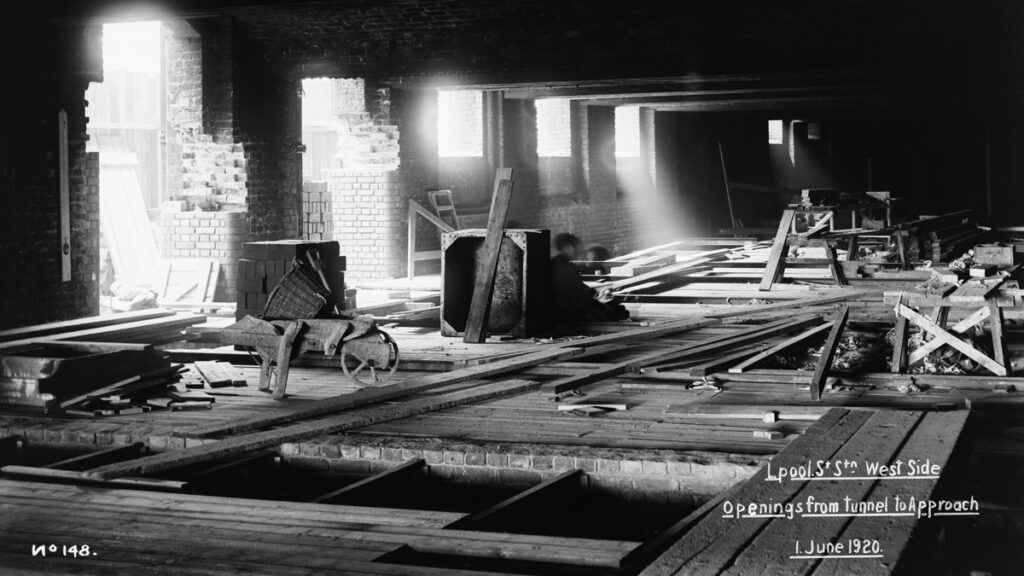
The image above shows construction works taking place on the Post Office underground railway beneath Liverpool Street station in June 1920. It opened seven years later and carried mail from Paddington station to Whitechapel, finally closing in 2003. The Post Office railway station at Liverpool Street was connected to platforms 10 and 11 on the mainline station by conveyors.
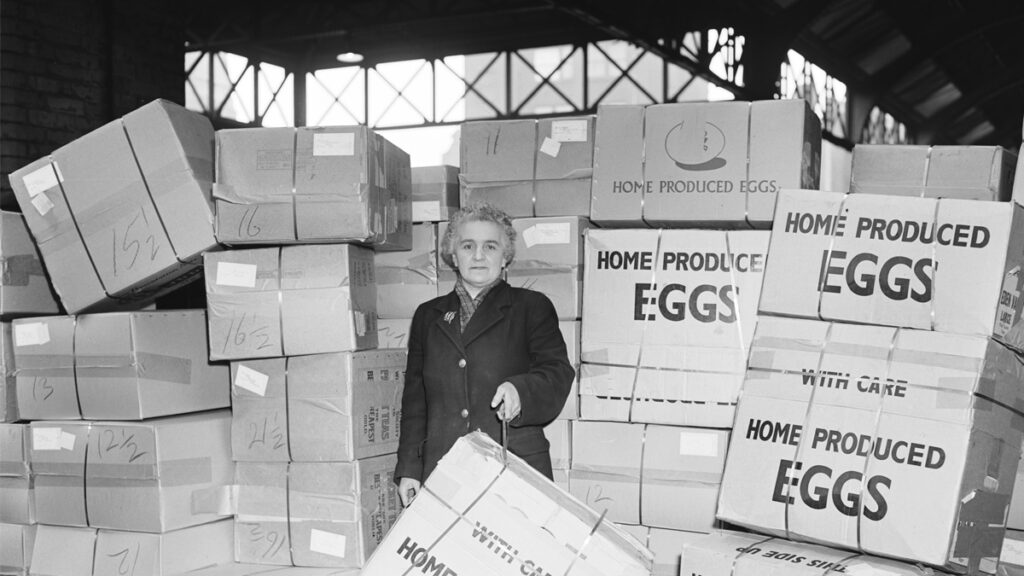
The image above shows boxes of eggs at the station in 1958. Eggs were carried in sealed containers which were refrigerated to keep them cool.
A rescue mission from Nazi Europe
In 1938 to 1939, around 10,000 mainly Jewish children were brought to the UK from Nazi Europe to save them from persecution. This was part of an organised rescue mission known as the Kindertransport. Most of the children took the train to Liverpool Street after arriving by boat, so our station was the last stop on a long journey to safety. Today there are two memorials at the station to recognise the children who were rescued, the people who helped them and those who were left behind.
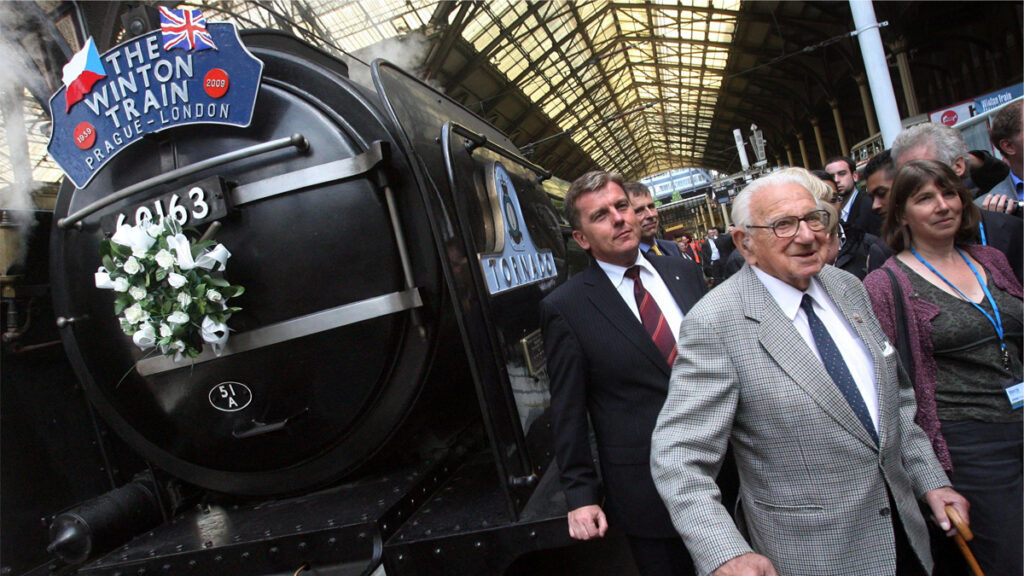
This photo shows the Winton Train on 4 September 2009 after pulling into platform 10 as part of a commemorative Kindertransport train journey from the Czech Republic. It was organised as a tribute to Sir Nicholas Winton (in the foreground), who supervised the rescue of 669 children.
